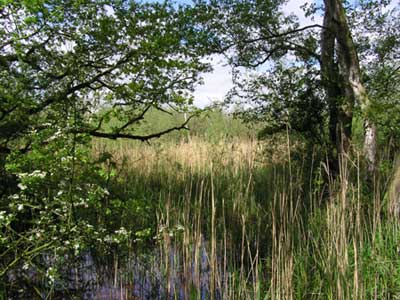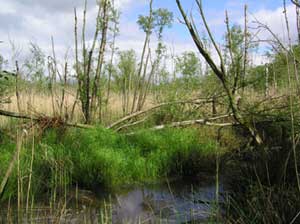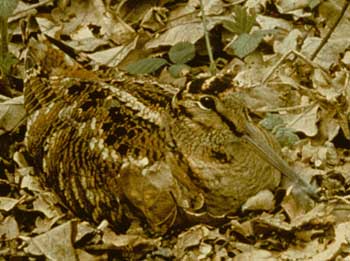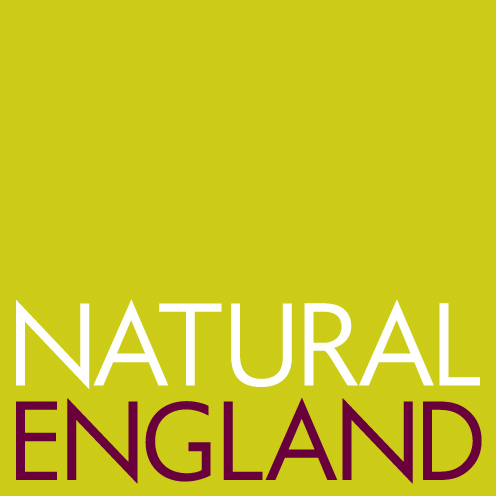Blo'Norton Little Fen

Blo'Norton Little Fen
Background
Blo'Norton Little Fen comprises 4.17 ha wet 'carr' woodland on the north bank of the River Little Ouse, immediately east of the Lows. It is a designated County Wildlife Site in recognition of the importance of its wildlife habitat in a Norfolk context. Like the other fens in the area, it supplied local people with peat for fuel until the railways brought cheap coal to the area in the 1930s. Its surface is still pitted with the remains of deep peat diggings. Aerial photographs show that in the 1940s it was completely open fenland and it is likely that this was home to many of the internationally rare species characteristic of the other fens in the valley. The cessation of management resulted in the loss of about a third of the open fen to invading scrub by the 1960s. Since then, progressive lowering of the water-table has resulted in loss of virtually all of the open fen and its associated rarities.
Today, the fen is a wilderness of wet sallow and alder-dominated woodland. Although the internationally rare plant species have gone, the wet woodland that has replaced them is itself a high priority habitat for biodiversity conservation in the UK (Wet Woodland Biodiversity Action Plan). In spring the fen is alive with breeding birds. Migrants species, including chiffchaff, willow warbler, blackcap, garden warbler and whitethroat can be heard singing. Great spotted and green woodpeckers, tree creepers and marsh tits, now 'red listed' because they have declined so dramatically in recent years, all breed there. Woodcock can be seen roding over the fen on spring evenings.
By high summer the most notable feature of the fen to visitors is the abundance of mosquitoes - but please remember that they are the power-house for much of the bird life that thrives there.
Conservation

Blo'Norton Little Fen
The Little Ouse Headwaters project leases Little Fen from the Blo'Norton Fuel Allotment Trust which gives the rent from its land to needy causes within the parish. A limited amount of tree clearance was undertaken by Blo'Norton Fen Conservation group in the late 1990s, but the site is currently maintained as 'non-intervention' woodland. The rising water table in the valley is resulting in die-back of trees in the wettest area and limited reversion to open fen. We plan progressively to improve public access to the fen and pedestrian links to other LOHP sites.
Special Features

Woodcock
Woodcock: This beautifully camouflaged wading bird breeds in woodland, prefering sites such as Little Fen, with damp areas and undergrowth in which to nest. Its distinctive roding flight can be seen over the fens at dusk, when it covers long circuits above the fens repeatedly calling in a series of low pitched ‘grunts’ and shrill whistles. We are priviledged to be able to see and hear it over the Little Ouse fens because it is in rapid deline in the UK as a whole and is 'amber listed' (24-49% decline) on the UK Biodiversity Steering Group's Conservation Concern list.
Wet wilderness!: The secluded wet woodland of Blo'Norton Little Fen is one of few places left in England where it is easy to imagine that you are in a primeval swamp!
Access
The fen is best viewed from the paths on the Lows. Limited access is possible along the northern and eastern margin of the fen winter and early spring but nettle growth makes it impenetrable by early summer. Please note that the deep peat diggings make it very dangerous to stray from the path close to the boundary. Dogs must be kept under close control to protect ground-nesting birds such as woodcock.


